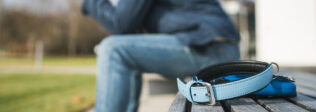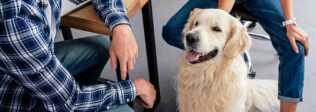You are ready for a new puppy to add to your family. Having a new dog in the house can be a fun experience but puppies can be a handful with discipline and responsibilities. Your puppy’s health is important in their first stages of life. Having this new puppy checklist will help you get started with your new addition.
Vet Exam

Get your new family member in for a puppy exam. There are different things that the veterinarian will check. Things like eyesight, hearing, reflexes, ears, and temperature. Finding some early signs of other major concerns can help keep you one step ahead if any treatment is needed.
Vaccinations

When you’re at the veterinarian have them start your puppy’s vaccinations. New puppies are recommended to get vaccinated every 3 weeks, starting on age 8 weeks. These vaccinations will be a series of 3 times.
Recommended vaccinations include:
Distemper
Canine distemper is a virus that affects the dog’s respiratory, gastrointestinal, respiratory, and central nervous system. Signs of this can be sneezing, coughing, and thick music coming from their eyes and nose.
*Highly Contagious
Parvovirus
Canine parvovirus is a life threatening disease that attacks the white blood cells. Symptoms include diarrhea, vomiting, loss of appetite, which leads to dehydration.
*Highly Contagious
Bordetella
Bordetella also known as Kennel Cough is an upper repertory infection that causes a hacking cough and can lead to pneumonia.
*Highly Contagious
Rabies
Rabies is a virus that affects the dog’s brain and spinal cord. The general symptoms of rabies are a behavioral change that may compound to aggression. The dog could also contain a high fever.
Deworming
Deworming kills any traces of worms or different types of internal parasites. Your puppy will lick just about everything in their new life. If your dog picks up an internal parasite they will start to have diarrhea, vomiting, loss of weight, or licking under their tail.
Heartworm Preventive
Heartworm in dogs is easy to prevent but can be difficult to cure. The most common way that a dog gets heartworm is from a mosquito bite. Heartworm is difficult to diagnose, but a common symptom a dog may have is coughing.
Spay or Neuter

One decision you will need to make, and one you don’t have to make when you first get your puppy is that if you will spay or neuter your pet. If you are not playing on breeding your pet, it is recommended that you consider this routine surgery.
Microchip

Microchips are a great way to identify your pet if they become missing. A pet microchip is a small electric device that is inserted in your pet’s skin just above their neck.
This chip is eligible to be scanned at most animal shelters. By scanning the chip, this will give the shelter data about the pet and the owner’s contact information.
Puppy Proof House

Just like a baby, you need to puppy proof your house. Puppies will chew and lick anything they can get into their mouth. Keep small objects off the floor, “breakables” up high, and anything harmful out of reach.
If you need to keep them out of a certain room or contained them in an area. Baby gates or other obstacles can help you contain your puppy. Covering and taking out your garbage will keep your dog’s curiosity at bay.
Puppy Proof The Yard
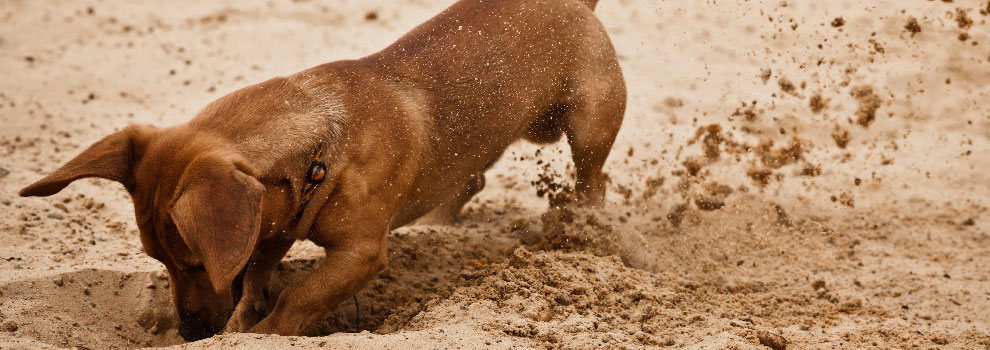
Not only does your house need to be puppy proof, but your yard as well. Like your house, your puppy may want to chew on anything that is left in the yard. This includes yard tools, hoses, or lawn equipment.
Make sure that your yard is fully closed off. Make sure there are no weak points in the fence, low spots to dig at, or gates with loose latches.
Dog Supplies

One advantage you could have with your puppy is getting your supplies before you get your pet home. Having everything ready to go before you bring your puppy home reduces stress for the puppy and for you.
Toys
Your puppy is going to want to bite, lick, and chew on everything it can get in their month. Having some chew toys around the house can teach them to use the toys instead of your brand new shoes. This can also help with growing puppy teeth and is a great way to prevent your dog’s bad breath.
Not only can toys help your puppy not chew on your stuff, but having them play and exercise throughout the day will keep their energy down and make them more manageable to train.
Food
Giving your new dog a puppy formulated food will promote healthy growth as they get older. Most puppy food has more calories, promotes better bone growth, and digestive system.
Dishes & Bowls
When you’re feeding your dog, you need something to put it in. Just get a couple of bowls to put food and water in. Make sure the water bowl is the adequate size to compensate for the warm temperatures in the summer. Make a designated spot in a low traffic area that they can feel comfortable to access.
Treats
Like most animals, dogs are food motivated. Giving them a treat when they do something good can help them understand how they should behave. A few treats won’t have any effect on your puppy’s health but do be aware that giving them too many could give them too many calories in a day could lead to weight gain.
Bedding
Having a soft bed or blanket for your dog will not only help their joints on the hard ground but will keep them warm in the colder temperatures. Don’t get discouraged when they drag it out in the snow and lay on it, they know what they are doing.
An option to give your dog a safe spot and make them more comfortable for traveling is having them sleep in a crate. Crates are made for all sizes of dogs and can be combined with other bedding materials.
Cleaning Supplies
If your puppy is inside or outside of the house there is going to be some waste cleanup needed. Inside the house, some cleaning supplies will be needed for some of the accidents until the dog is housebroken.
For the outside, cleaning up the yard of waste about once a week will keep your lawn green and the smell down.
Leash and Collar
Your dog will need some exercise and you may want to take them down to the park on occasions. All cities do require tags that need to be attached to their collar. Check with your local city but the most common ones are city licensing and current rabies vaccination tag.
There are multiple options for types of leashes. Find what works for both you and your dog. A smaller dog is probably better to have a harness type leash. A larger dog is fine with a leash attached to the collar.
New Puppy Checklist Infographic
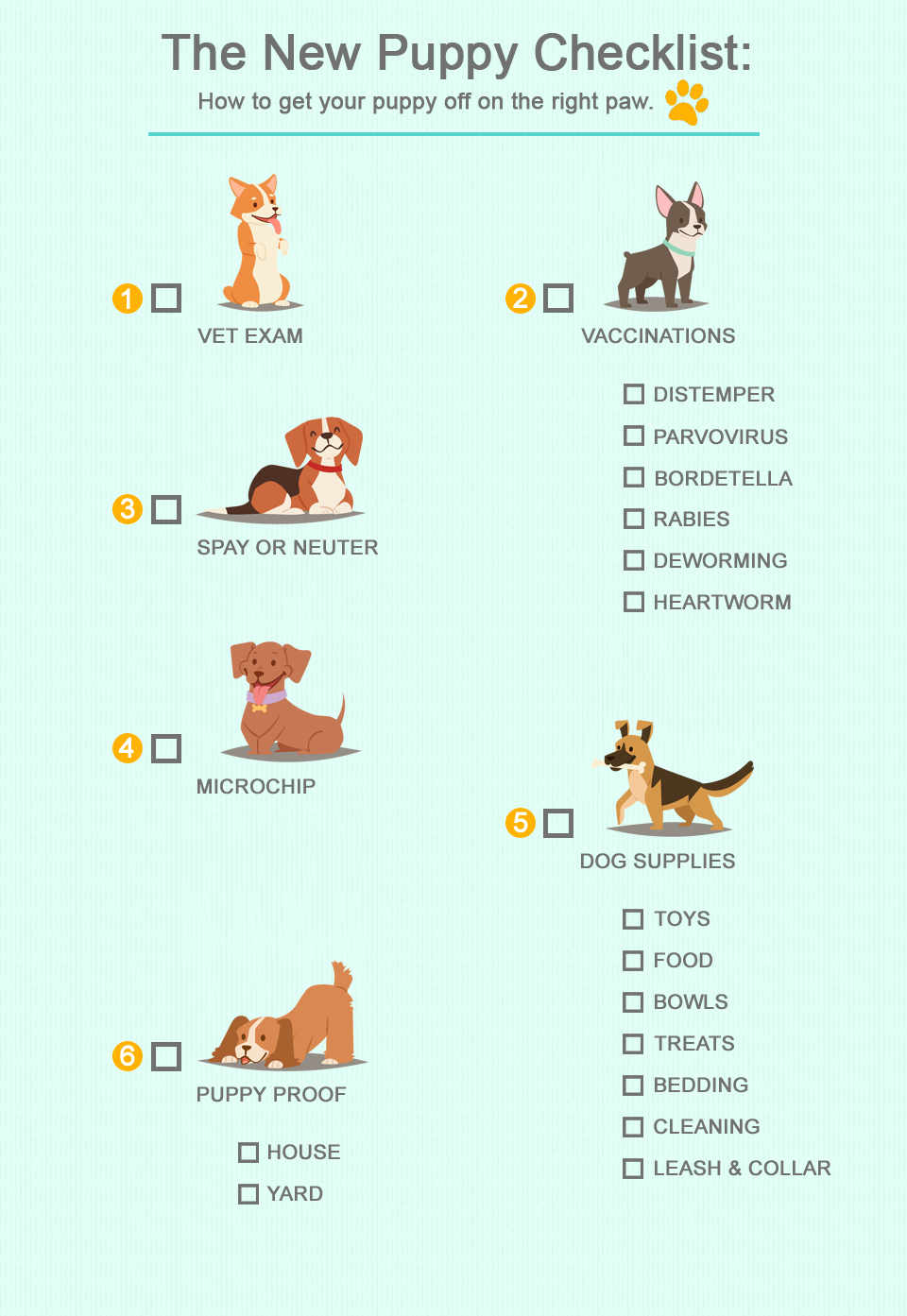
Share this Image On Your Site
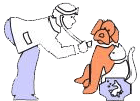 All About Pets
All About Pets 